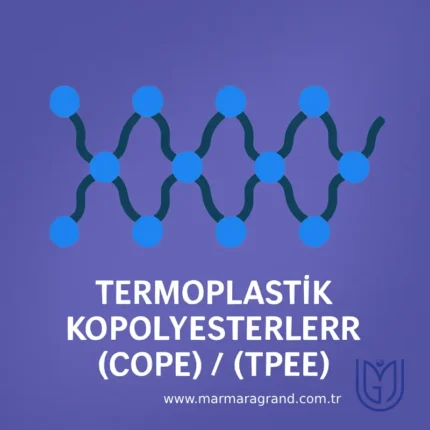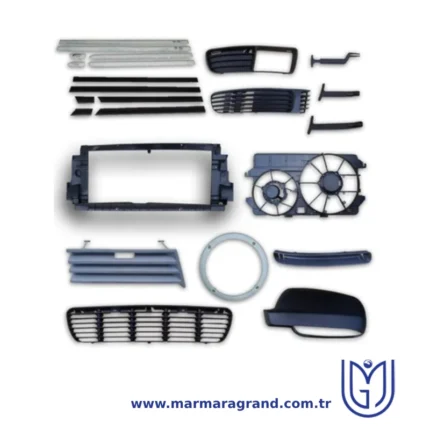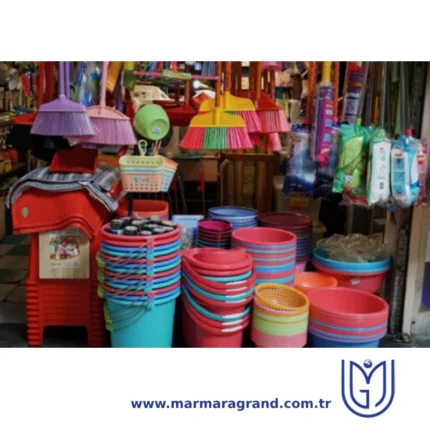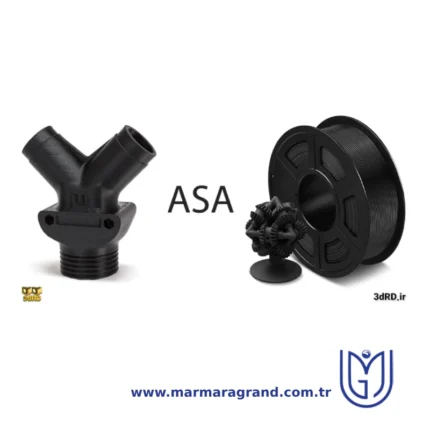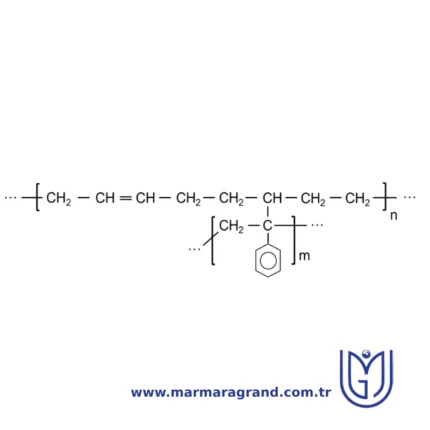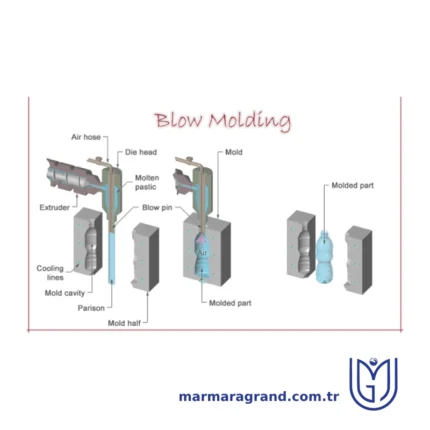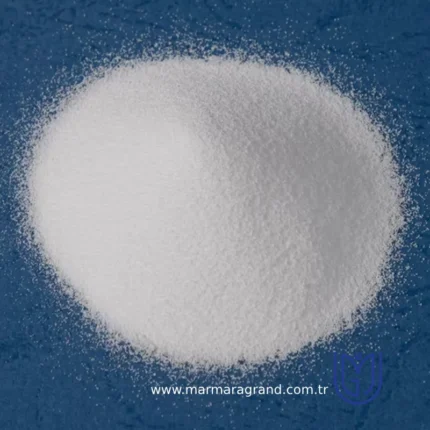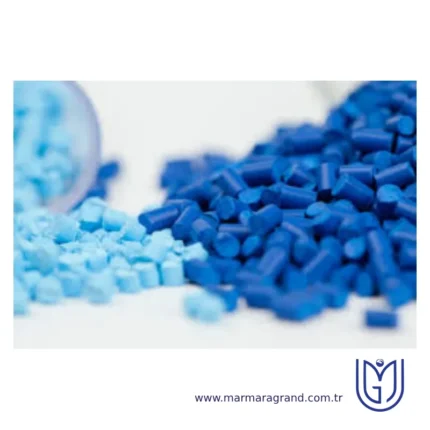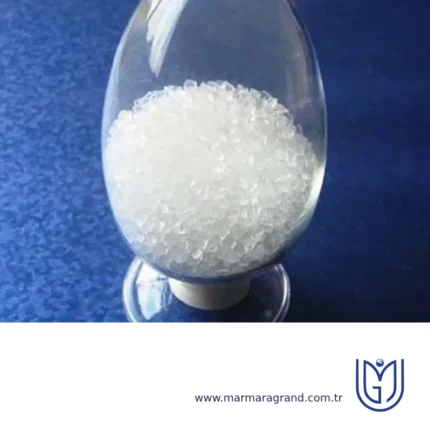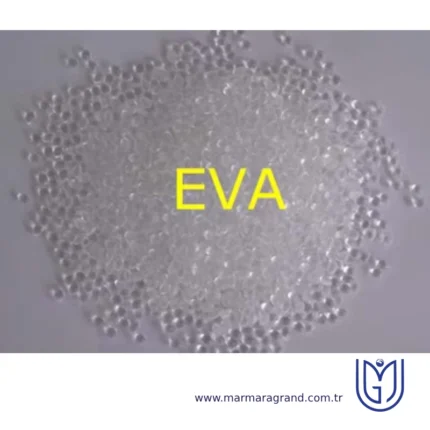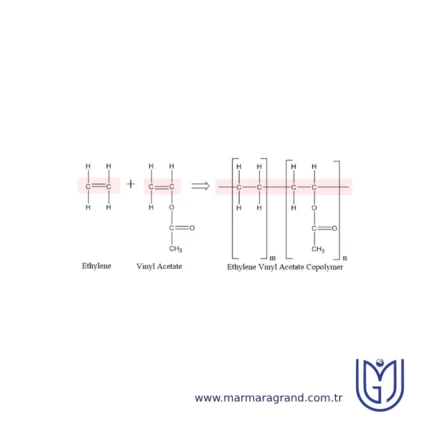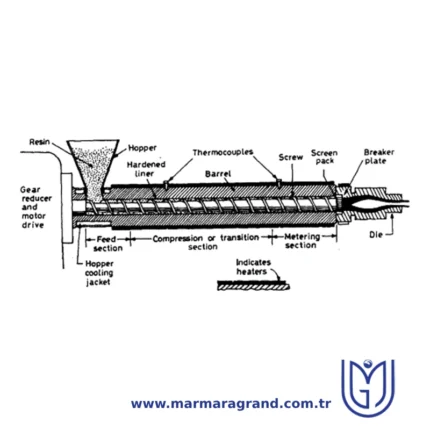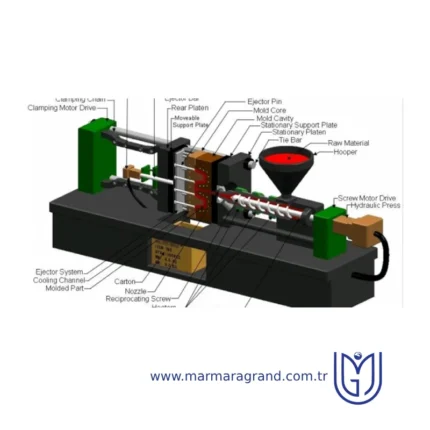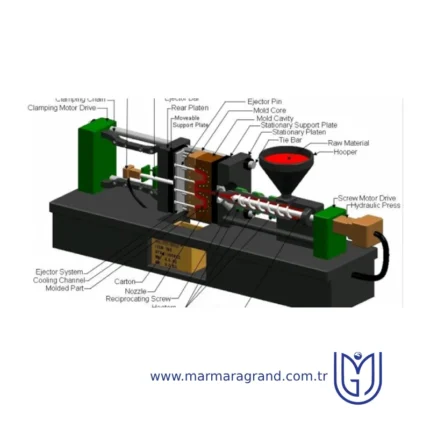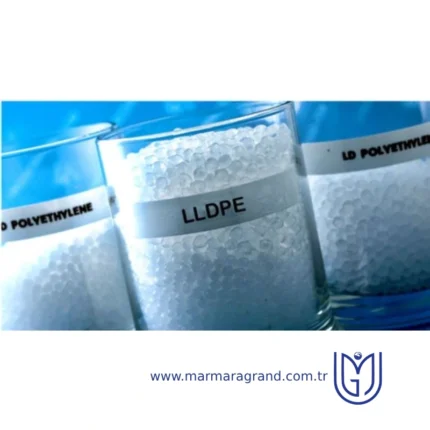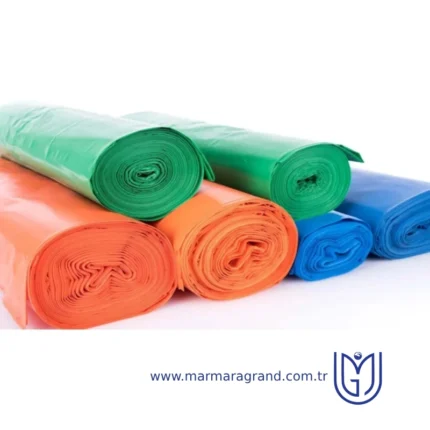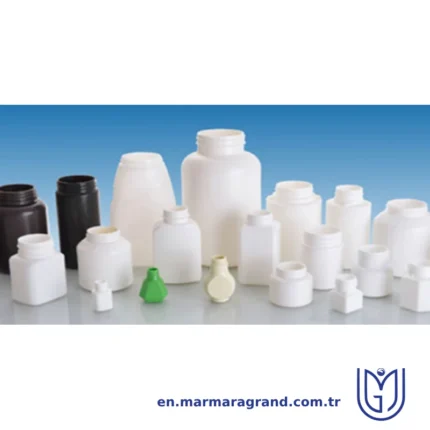(COPE)/(TPEE) Thermoplastic copolyesters
Thermoplastic Copolyesters (COPE), also known as Thermoplastic Polyester Elastomers (TPEE), are a class of thermoplastic elastomers (TPEs) that combine the mechanical properties of engineering plastics with the elasticity of rubber. They are composed of hard polyester crystalline segments and soft amorphous segments, providing a balance of strength, flexibility, and chemical resistance.
PropertiesThermoplastic Copolyesters (COPE), also known as Thermoplastic Polyester Elastomers (TPEE), combine the mechanical strength of engineering plastics with the flexibility and resilience of elastomers. They exhibit excellent elasticity, allowing them to return to their original shape after deformation, while also providing high tensile strength and durability. COPE materials offer outstanding chemical and solvent resistance, making them suitable for harsh environments. Their thermal stability enables them to maintain performance across a wide temperature range, with good low-temperature flexibility and resistance to heat aging. Additionally, they possess excellent abrasion resistance, impact strength, and fatigue resistance, ensuring longevity in demanding applications. With easy processability through injection molding, extrusion, and blow molding, COPE is widely used in automotive, industrial, consumer, and medical applications where a balance of toughness, flexibility, and chemical resistance is required.
StructureThermoplastic Copolyesters (COPE), also known as Thermoplastic Polyester Elastomers (TPEE), are a class of high-performance elastomers that combine the characteristics of both thermoplastics and rubbers. Their structure consists of alternating soft and hard segments, where the soft segments are typically made of aliphatic polyether or polyester, providing flexibility and elasticity, while the hard segments are composed of polyester blocks, offering strength, thermal resistance, and durability. This segmented block copolymer structure enables TPEEs to exhibit excellent mechanical properties, such as high tensile strength, impact resistance, and superior fatigue endurance. The presence of ester linkages in the hard phase contributes to chemical resistance and heat stability, while the soft phase ensures flexibility even at low temperatures. Due to this unique molecular architecture, COPEs find applications in various industries, including automotive, consumer goods, electrical components, and medical devices, where both resilience and processability are essential.
Applications
- Automotive: Used in air ducts, CVJ boots, bellows, gaskets, and wire coatings due to high heat and chemical resistance.
- Industrial & Mechanical: Employed in conveyor belts, hoses, seals, and grommets for durability and flexibility.
- Consumer Goods: Found in footwear soles, sports equipment, and flexible smartphone components for comfort and toughness.
- Electrical & Electronics: Used in cable insulation, connectors, and protective coatings due to excellent dielectric properties.
- Medical Devices: Applied in tubing, catheters, and soft-touch grips because of biocompatibility and sterilization resistance.
Advantages
- High Elasticity & Flexibility: Maintains shape and flexibility even under stress.
- Excellent Heat Resistance: Performs well at elevated temperatures compared to other TPEs.
- Superior Mechanical Strength: Offers high tensile strength, impact resistance, and fatigue endurance.
- Good Chemical Resistance: Resistant to oils, solvents, and many industrial chemicals.
- Wide Processing Window: Easily processed through injection molding, extrusion, and blow molding.
- Recyclable: More environmentally friendly than thermoset elastomers.
Disadvantages
- Higher Cost: More expensive than other thermoplastic elastomers (TPEs).
- Limited Low-Temperature Flexibility: Can become less flexible at extremely low temperatures compared to TPU.
- Absorbs Moisture: May require drying before processing to prevent defects.
- Processing Challenges: Requires precise temperature control during molding and extrusion
Acrylonitrile Butadiene Styrene (ABS)
ABS is a terpolymer made by polymerizing styrene and acrylonitrile in the presence of polybutadiene. The proportions can vary from 15% to 35% acrylonitrile, 5% to 30% butadiene and 40% to 60% styrene. ABS is most commonly polymerised through the emulsification process or the expert art of combining multiple products that don’t typically combine into a single product.
Structure
ABS is a long chain of polybutadiene crisscrossed with shorter chains of poly(styrene-co-acrylonitrile).Properties
The combination of polymers gives ABS a unique set of properties that make it highly desirable for various applications. The acrylonitrile component contributes to the material's chemical and thermal resistance, while the butadiene component enhances its impact strength and toughness. Lastly, the styrene component imparts rigidity and processability to the ABS material. ABS tensile strength ranges from 30 to 60 megapascals (MPa), ensuring structural integrity and load-bearing capabilities. also ABS materials demonstrate good resistance to a wide range of chemicals, including acids, alkalis, and various solvents.Applications
Automotive Industry ABS is extensively used in the automotive industry for both interior and exterior components. Its excellent impact resistance, durability, and ease of processing make it suitable for applications such as dashboard panels, door trims, interior handles, and exterior body parts. 2.Consumer Goods: It is commonly used for manufacturing household appliances, including vacuum cleaners, kitchen appliances, and home entertainment systems. ABS's toughness, impact resistance, and electrical insulation properties make it suitable for these applications. 3.Medical and Healthcare: ABS materials are increasingly used in the medical and healthcare sectors. Their biocompatibility, ease of sterilization, and resistance to chemicals make them suitable for applications such as medical equipment housings, handles, and trays. ABS's dimensional stability and durability ensure that medical devices withstand repeated sterilization processes without compromising their performance. 3.Industrial and Manufacturing: ABS materials find numerous applications in the industrial and manufacturing sectors. They are commonly used in the production of protective equipment, tool handles, machinery components, and housings for industrial machinery. ABS's excellent mechanical properties, including impact resistance and dimensional stability, make it suitable for demanding industrial environments.Advantages
- reasonable production costs
- ability to withstand being heated and cooled multiple times
- suitable for recycling
- high Impact resistance
- Chemical resistance
- High Strength and stiffness
Disadvantages
- Flammability
- Poor weather resistance
- Limited heat resistance
Acrylonitrile Styrene Acrylate (ASA)
ASA is a copolymer of SAN and acrylic rubber, and it is a highly functional plastic with excellent weatherability while maintaining most of the advantages of ABS. Thanks to its excellent retention of physical properties and appearances in outdoor applications for a long time, it is used as a material for automobile exterior, construction and furniture finishing sheet, etc.
Acrylonitrile Styrene Acrylate structureASA is typically formed by grafting acrylonitrile and styrene onto an acrylic ester elastomer backbone. The acrylic ester phase provides the material with flexibility and impact resistance, while the acrylonitrile and styrene phases contribute to rigidity, chemical resistance, and surface finish.
Acrylonitrile Styrene Acrylate propertiesAcrylonitrile-Styrene-Acrylate (ASA) polymer exhibits a combination of properties that make it well-suited for outdoor and demanding applications. Acrylonitrile Styrene Acrylate (ASA) polymer is a thermoplastic known for its excellent weather resistance, high impact strength, and UV stability, making it ideal for outdoor applications. It combines the toughness of acrylonitrile, the rigidity of styrene, and the weather-resistant properties of acrylic ester, resulting in a material that maintains its color, gloss, and mechanical integrity even under prolonged exposure to sunlight and harsh environmental conditions. ASA is resistant to chemicals, heat, and environmental stress cracking, and it exhibits good processability, enabling it to be molded into complex shapes. Its durability and aesthetic qualities make it suitable for use in automotive parts, outdoor furniture, and building materials.
ApplicationAutomotive Industry
- Exterior Components: Used for manufacturing exterior parts like side view mirrors, radiator grilles, and trims due to its resistance to UV radiation and harsh weather conditions.
- Interior Components: Employed in dashboards, panels, and other interior parts requiring durability and aesthetic appeal.
- Roofing and Cladding: ASA is used in roofing sheets, siding, and cladding materials for its resistance to fading and cracking when exposed to sunlight.
- Windows and Doors: Frames and profiles made of ASA are durable and maintain their color over time.
- Casing and Enclosures: ASA is used in the production of enclosures for electronic devices, electrical components, and appliances due to its impact resistance and aesthetic surface finish.
- Connectors and Insulators: The polymer is valued for its insulating properties and stability.
- Outdoor Furniture: Widely used for chairs, tables, and other outdoor furniture because it retains color and strength under prolonged exposure to sunlight and rain.
- Household Items: Utilized in kitchen appliances, vacuum cleaners, and other durable goods.
- Filament Material: ASA is a popular material for 3D printing, especially for outdoor applications, as it offers better UV resistance compared to ABS.
Advantages
- High impact strength
- Good Processability
- Weather Resistance
- Color and Gloss Retention
- Durability
Disadvantages
- Limited High-Temperature Resistance
- Flammability
- Lower Strength Compared to Metals
- Environmental Impact
Blow Molding
Blow molding is a manufacturing process used to create hollow plastic parts by inflating a heated plastic tube (called a parison or preform) inside a mold cavity until it conforms to the shape of the mold. It is widely used for producing bottles, containers, and other hollow objects.
Types of blow moldingContinuous Extrusion Blow Molding (EBM) Process:
- Molten plastic is continuously extruded in a tube-like form (parison).
- A mold clamps around the parison and inflates it with air.
- The part cools and solidifies before being ejected.
- Reciprocating Screw System: The screw moves back and forth to accumulate plastic before pushing it into the mold.
- Accumulator Head System: Plastic is stored in an accumulator before being discharged in a single shot.
- Plastic is first injection molded into a preform (small tube-like shape with a finished neck).
- The preform is then transferred to a blow mold and inflated.
- The final shape is formed, cooled, and ejected.
- Similar to IBM, but includes a stretching step before inflation to improve strength and clarity.
- The preform is reheated, stretched lengthwise, and then blown into shape.
- A parison is extruded and clamped in a mold.
- The parison is stretched both axially (lengthwise) and radially (outward) before being inflated.
Advantages of blow molding
- Cost-Effective Production
- High Efficiency & Fast Production
- Ability to Produce Complex Shapes
- Lightweight and Durable Products
- Versatile Material Usage
- Suitable for Large & Small Products
Disadvantages of blow molding
- Limited to Hollow Shapes
- High Initial Equipment & Mold Costs
- Inconsistent Wall Thickness
- Weak Seams & Stress Points
- Less Precision Compared to Injection Molding
- High Energy Consumption
Applications of blow molding
- packaging Industry: Bottles for beverages, cosmetics, pharmaceuticals, and household products.
- Automotive Industry: Fuel tanks, air ducts, washer fluid reservoirs, and coolant tanks.
- Industrial & Chemical Storage: Drums, barrels, IBCs, and spray bottles.
- Medical & Pharmaceutical: IV bottles, medicine containers, and diagnostic device housings.
- Consumer Goods: Toys, furniture components, water bottles, and detergent containers.
- Construction Industry: Water tanks, septic tanks, pipes, and conduits.
- Agriculture Industry: Pesticide and fertilizer containers, watering cans, and irrigation components.
Emulsion
Polyvinyl chloride (PVC) is a widely used thermoplastic polymer made from the polymerization of vinyl chloride monomers (VCM).
PVC is produced by polymerizing vinyl chloride monomers using different techniques.one of these techniques is emulsion polymerization.PVC (Polyvinyl Chloride) emulsion grade is a type of PVC resin produced via the emulsion polymerization process. This method results in very fine particles of PVC, which are ideal for applications requiring a smooth, uniform texture.
StructurePVC emulsion grade is a fine-particle polymer produced through emulsion polymerization, resulting in a high molecular weight material with excellent dispersion and film-forming properties. Its structure consists of small, porous particles that readily absorb plasticizers, making it ideal for flexible and soft applications. The polymer chains in emulsion-grade PVC are densely packed, contributing to its superior adhesion, smooth surface finish, and enhanced mechanical properties. Unlike suspension-grade PVC, which has larger and more irregular particles, emulsion-grade PVC exhibits a uniform texture and lower gelation temperature, making it suitable for applications such as synthetic leather, vinyl flooring, medical gloves, and textile coatings. This structural composition allows for easy processing in plastisols and organosols, ensuring a high degree of flexibility, durability, and aesthetic appeal in the final products.
PropertiesPVC emulsion grade is a fine-particle, high molecular weight polymer known for its excellent dispersion and film-forming properties. It has a small particle size, typically in the range of 0.1–2.0 microns, which allows for superior surface finish and enhanced mechanical strength in end applications. This grade of PVC exhibits good plasticizer absorption, making it ideal for flexible and soft products such as synthetic leather, flooring, coatings, and dip-molded goods. It also offers high viscosity in plastisol form, ensuring uniform application in coatings and pastes. Additionally, PVC emulsion grade demonstrates good chemical resistance, durability, and thermal stability, making it suitable for a wide range of industrial and consumer applications.
Applications of PVC Emulsion Grade:
- Synthetic Leather – Used in the production of artificial leather for furniture, automotive upholstery, and fashion accessories.
- Coatings & Paints – Provides a smooth and durable finish in coatings for fabrics, wallpapers, and flooring.
- Dipping Products – Used in medical gloves, toys, and tool grips due to its excellent film-forming properties.
- Flooring & Wall Coverings – Applied in vinyl flooring, wall coverings, and laminates for enhanced durability and aesthetics.
- Printing Inks – Improves adhesion and flexibility in specialized printing inks.
- Automotive & Construction – Utilized in automotive interiors and flexible membranes in construction applications.
Advantages of PVC Emulsion Grade:✔ Excellent Film Formation – Ensures smooth, uniform coatings and films. ✔ High Plasticizer Absorption – Enables flexibility and softness in final products. ✔ Good Chemical & Weather Resistance – Resistant to moisture, chemicals, and UV exposure, enhancing durability. ✔ Fine Particle Size – Allows superior surface finish and controlled viscosity in plastisol applications. ✔ Versatility – Suitable for a wide range of industrial and consumer applications.
Disadvantages of PVC Emulsion Grade:✖ Environmental Concerns – Contains plasticizers and additives that may cause pollution or health risks if not properly managed. ✖ Processing Sensitivity – Requires precise temperature control during processing to prevent degradation. ✖ Lower Heat Resistance – Can soften or degrade at high temperatures, limiting its use in extreme conditions. ✖ Limited Biodegradability – Like other PVC types, it does not decompose easily, posing disposal challenges.
Ethylene TetraFluoroEthylene (ETFE)
Ethylene Tetrafluoroethylene (ETFE) is a high-performance fluoropolymer known for its exceptional strength, lightweight nature, and resistance to environmental conditions. It was originally developed as an insulating material for the aerospace industry but is now widely used in architectural and industrial applications.
Structure
Ethylene Tetrafluoroethylene (ETFE) is a copolymer composed of ethylene (C₂H₄) and tetrafluoroethylene (C₂F₄) units. Its molecular structure consists of a repeating chain of carbon atoms bonded to both fluorine and hydrogen atoms, giving it a unique combination of chemical resistance, mechanical strength, and thermal stability. The presence of fluorine atoms enhances its non-stick properties and high resistance to UV radiation, while the ethylene component contributes to its flexibility and toughness. Unlike polytetrafluoroethylene (PTFE), ETFE has a lower fluorine content, making it slightly less chemically inert but significantly stronger and more impact-resistant. This structural composition results in a lightweight, durable material that retains its transparency and mechanical properties even under extreme environmental conditions. ETFE's semi-crystalline structure also allows it to be processed into thin films, making it highly suitable for architectural applications, insulation, and protective coatings.Properties
Ethylene Tetrafluoroethylene (ETFE) possesses a unique combination of properties that make it highly versatile across various applications. It is exceptionally lightweight, weighing only about 1% of the weight of glass, while maintaining high tensile strength and impact resistance. Its chemical structure provides outstanding resistance to ultraviolet (UV) radiation, weathering, and most chemicals, ensuring long-term durability in harsh environments. ETFE is highly transparent, allowing up to 95% of natural light to pass through, making it an excellent choice for architectural applications. Additionally, it has a low coefficient of friction, giving it self-cleaning and anti-fouling properties. The material is also highly flexible, capable of stretching up to three times its original length without losing integrity. With a high melting point of around 265°C (509°F), ETFE exhibits excellent thermal stability and can withstand extreme temperature fluctuations without degradation. Furthermore, it is a recyclable material, adding to its sustainability by reducing environmental impact. These combined properties make ETFE a preferred choice for applications in construction, aerospace, medical, and renewable energy industries.Advantages
• Lightweight: Weighs only about 1% of the weight of glass. • High Strength & Durability: Resistant to mechanical stress, impact, and punctures. • Transparency: Allows up to 95% natural light transmission. • UV & Weather Resistance: Does not degrade under prolonged sunlight exposure. • Chemical Resistance: Withstands most acids, solvents, and other harsh chemicals. • Self-Cleaning Surface: Low friction and non-stick properties prevent dirt accumulation. • Thermal Stability: Can withstand extreme temperatures (-185°C to 150°C). • Flexibility & Elasticity: Can stretch up to three times its length without damage. • Eco-Friendly & Recyclable: Can be melted down and reused.Disadvantages
• Higher Cost: More expensive than traditional materials like glass or polycarbonate. • Flammability Concerns: Can burn under extreme conditions but is self-extinguishing. • Limited Structural Support: Needs additional framing or inflation systems for strength. • Softness & Scratch Sensitivity: Can be scratched more easily than glass. • Noise Insulation: Provides less soundproofing compared to solid materials.Applications
• Architecture & Construction: Used in stadiums, skylights, and domes (e.g., Allianz Arena, Eden Project). • Aerospace & Automotive: Used for wire insulation and protective coatings. • Medical Industry: Used for tubing, catheters, and biocompatible coatings. • Chemical Industry: Lining for pipes and tanks due to its chemical resistance. • Solar & Renewable Energy: Used in photovoltaic panel coatings and greenhouse covers. • Electronics: Used in high-performance cable insulation for aerospace and telecommunications.Ethylene Vinyl Acetate (EVA)
Ethylene Vinyl Acetate (EVA) is a copolymer composed of ethylene and vinyl acetate (VAC). The properties of EVA vary depending on the ratio of these two components, with vinyl acetate content typically ranging from 1% to 40% by weight.
Structure
Ethylene Vinyl Acetate (EVA) is a copolymer composed of ethylene and vinyl acetate (VAC) monomers, with its structure characterized by randomly distributed vinyl acetate units within a polyethylene-like backbone. The proportion of vinyl acetate in the copolymer significantly influences its properties, with lower vinyl acetate content (typically below 10%) resulting in a more rigid, polyethylene-like material, while higher vinyl acetate content (above 40%) leads to a more rubbery and flexible structure. The presence of vinyl acetate disrupts the crystallinity of polyethylene, enhancing the copolymer’s flexibility, impact resistance, and transparency. EVA exhibits a balance between thermoplastic and elastomeric properties, making it widely used in applications such as adhesives, foams, films, and footwear. Its molecular structure provides excellent toughness, stress-crack resistance, and adhesion to various substrates, making it a versatile polymer in multiple industries.
Properties
Ethylene Vinyl Acetate (EVA) copolymers exhibit a unique combination of properties that vary based on the vinyl acetate (VAC) content. They offer excellent flexibility, elasticity, and toughness, with higher VAC content leading to increased softness, transparency, and impact resistance. EVA has low-temperature resistance, maintaining flexibility even at sub-zero temperatures, and demonstrates good stress-crack resistance. It is also lightweight, has a low density, and provides excellent adhesion to various substrates, making it ideal for adhesives and coatings. Additionally, EVA is resistant to UV radiation and environmental stress, contributing to its durability in outdoor applications. It has good chemical resistance to water, oils, and certain solvents, though it may degrade under high temperatures or prolonged exposure to strong chemicals. The copolymer is also non-toxic, making it suitable for medical and food-contact applications. Its thermal and electrical insulation properties further enhance its versatility in industrial, packaging, and footwear applications.
Applications of Ethylene Vinyl Acetate (EVA) Copolymers:
- Footwear: Used in midsoles, insoles, and outsoles for cushioning and flexibility.
- Adhesives: Hot melt adhesives in packaging, bookbinding, and woodworking.
- Foams: Sports mats, yoga mats, and padding materials.
- Packaging: Film applications for food packaging and medical films.
- Automotive: Interior trims, soundproofing, and under-the-hood components.
- Solar Panels: Encapsulation of photovoltaic cells for durability and insulation.
- Wire & Cable Insulation: Used in electrical applications due to flexibility and insulation properties.
- Toys & Consumer Goods: Soft, flexible materials for safety and durability.
- Flexibility & Softness: Offers rubber-like elasticity and comfort.
- Lightweight: Reduces overall product weight while maintaining durability.
- Good Adhesion: Bonds well with various substrates, making it ideal for adhesives.
- Weather & UV Resistance: Suitable for outdoor applications like solar panels and footwear.
- Chemical Resistance: Resists many chemicals, oils, and solvents.
- Low-Temperature Performance: Maintains flexibility in cold conditions.
- Non-Toxic & Safe: Used in food packaging and medical applications.
- Lower Heat Resistance: Can degrade or deform at high temperatures.
- Lower Mechanical Strength: Compared to other thermoplastics like polyethylene or polypropylene.
- Aging & Degradation: May degrade over time when exposed to UV radiation or harsh conditions.
- Flammability: Not inherently flame-retardant without additives.
- Cost: Can be more expensive than some alternative plastics like PVC.
Extrusion
The extrusion process is basically designed to continuously convert a soft material into a particular form. The heart of this processing/fabrication machine is a screw conveyer. It carries the cold plastic material (in granular or powdered form) forward by the action of the screw and squeezes it, and, with heat from external heaters and the friction of viscous flow, changes it to a molten stream (refer to Figure 1). As it does this, it develops pressure on the material, which is highest right before the molten plastic enters the die. The screen pack, consisting of a number of fine or coarse mesh gauzes supported on a breaker plate and placed between the screw and the die, filter out dirt and unfused polymer lumps. The pressure on the molten plastic forces it through an adapter and into the die, which dictates the shape of the final extrudate.
Hot extrusionHot extrusion is a hot working process, which means it is done above the material’s recrystallization temperature to keep the material from work hardening and to make it easier to push the material through the die. Most hot extrusions are done on horizontal hydraulic presses that range from 230 to 11,000 metric tons . Pressures range from 30 to 700 MPa , therefore lubrication is required, which can be oil or graphite for lower temperature extrusions, or glass powder for higher temperature extrusions. The biggest disadvantage of this process is its cost for machinery and its upkeep.
Cold extrusionCold Extrusion is a push-through compressive forming process with the starting material (billet/slug) at room temperature. During the process, however, the deforming material undergoes deformation heating (conversion of deformation work to heat) to several hundred degrees. Typically, a punch is used to apply pressure to the billet enclosed, partially or completely, in a stationary die.
Advantages of Extrusion:
- Cost-effective for large-scale production with minimal waste.
- Versatile: Supports various materials and shapes.
- Customizable: Additives and design flexibility.
- Consistent quality and scalable production.
- Energy-efficient and integrates with other processes.
Disadvantages of Extrusion:
- Material limitations: Not all polymers are suitable.
- High setup costs: Equipment and dies are expensive.
- Dimensional variability: Cooling shrinkage and die swell.
- Shape limitations: Intricate designs are challenging.
- Quality control issues: Surface defects and material inconsistencies.
- Post-processing needs: Cutting, finishing, or coating required.
- Environmental concerns: Energy use and plastic waste.
Application of extrusion1.Construction Industry
- Pipes and tubing (e.g., PVC pipes, drainage systems).
- Window and door profiles (e.g., uPVC frames).
- Insulation materials (e.g., foam boards, weather seals).
- Plastic films and sheets (e.g., food packaging, shrink wraps).
- Containers and trays.
- Seals and gaskets.
- Wire and cable insulation.
- Interior trims and protective sheathing.
- Straws, ropes, and garden hoses.
- Plastic profiles for furniture or appliances.
- Wire and cable coatings.
- Conduits for electrical wiring.
- Catheters, tubing, and other medical-grade profiles.
- Conveyor belts and guides.
- Protective linings for machinery.
- Irrigation tubing and films.
- Greenhouse covers.
Injection Molding
In injection molding, polymer granules are compressed by a ram or screw, heated until molten and squirted into a cold, split mold under pressure (Figure 26.3(b)). The molded polymer is cooled below TG, the mold opens and the product is ejected. Excess polymer is injected to compensate for contraction in the mold. The molecules are oriented parallel to the flow direction during injection, giving useful strengthening, but properties that are anisotropic. The process gives high-precision moldings, because the polymer cools with the pressure still on but is slow (the cycle time is between 1 and 5 min), and the molds are expensive. Typically, molding temperatures for thermoplastics are between 150 and 350 °C (1.3 and 1.6 TG) and the pressures needed to give good detail are high—typically 30–120 MN m−2.
Types of injection moldingGas-Assisted Injection Molding This process involves injecting gas (commonly nitrogen) into the molten polymer during molding. The gas pushes the molten plastic against the mold walls, creating hollow sections or reducing the amount of material used. Thin-Wall Injection Molding This method Focuses on producing parts with very thin walls, typically less than 1 mm. This requires specialized molds and machines capable of handling high pressures and fast cycle times. Liquid Silicone Rubber (LSR) Injection Molding This method is Used exclusively for liquid silicone rubber (LSR), a thermosetting material that cures when heated. LSR is injected into a heated mold, where it solidifies into a flexible and durable part. Structural Foam Molding A process where a foaming agent or gas is added to the polymer to create parts with a cellular core and solid outer skin. This reduces density and weight while maintaining strength. Metal Injection Molding (MIM) A process that combines metal powders with a polymer binder to create a feedstock. The feedstock is injected into a mold, then the binder is removed, and the part is sintered to achieve a dense metal component.
Advantages of injection molding
- Injection molding is incredibly cost-effective, especially in high-volume applications where thousands to tens of thousands of parts are printed in a workday.
- Injection molding offers many different materials, both general use, and specialty.
- Injection molding provides immense design freedom to product developers and is only held back by mold design, material specifications, and cost.
- Injection-molded parts can be as small as a grain of rice (or smaller) or can be as large as a car dashboard, depending upon the specific type of injection molding being used.
- Injection molding can produce highly complex parts that would otherwise be too time-consuming or difficult to produce with traditional subtractive manufacturing methods.
- Injection molding is a low/no waste manufacturing method, and waste can typically be 100% recycled and reground into stock material for a new injection mold.
Disadvantages of injection molding
- High initial tooling and equipment costs.
- Long lead times for mold design and production.
- Material limitations and risk of defects.
- Environmental and sustainability concerns.
- Design constraints requiring engineering expertise.
- Best suited for high-volume production.
Applications of injection moldingPlastic injection molding is used throughout industry as a means of manufacturing plastic parts in high volumes. Its applications are theoretically endless given the various types of injection molding available combined with its popularity. Still, there are some core usages for which the injection molding process particularly excels. Examples of injection molding applications include (but are not limited to):
- Automotive components
- Food and Beverage packaging
- Stock materials (spools, bar, tube, etc.)
- Toys and figurines
- Furniture components
- Fixtures and fasteners
- Mechanical components (gears, valves, pumps, linkages, etc.)
- Electronic hardware and housings
- Medical device components
- General plastic parts
Linear Low Density Polyethylene (LLDPE)
LLDPE stands for Linear Low-Density Polyethylene. It is a type of polyethylene (a polymer made from ethylene monomers) that has short, linear branches in its molecular structure. This structure gives LLDPE unique properties compared to LDPE (Low-Density Polyethylene) and HDPE (High-Density Polyethylene).
StructureLLDPE has a unique linear molecular structure with short, controlled branches. This structure is different from LDPE (Low-Density Polyethylene), which has long and irregular branches. LLDPE consists of ethylene monomers (–CH₂–CH₂–) linked in a linear fashion. It has short, uniform side branches created by copolymerizing ethylene with α-olefins (like butene, hexene, or octene).These branches prevent the polymer chains from packing too tightly, giving LLDPE low density and flexibility.
PropertiesLLDPE (Linear Low-Density Polyethylene) is a versatile thermoplastic polymer known for its excellent flexibility, high impact resistance, and good tensile strength. it is slightly denser than LDPE but less rigid than HDPE, making it ideal for applications requiring toughness and stretchability. It has a high elongation at break (>500%), allowing it to withstand significant stretching without tearing. LLDPE exhibits excellent chemical resistance against acids, bases, and alcohols while maintaining low water absorption, making it suitable for moisture-sensitive applications. Thermally, it has a melting point of approximately 110–125°C and remains functional between -50°C and 60°C. Though it lacks inherent UV resistance, stabilizers can be added to improve durability under sunlight. Its ease of processing through extrusion, blow molding, and film manufacturing makes it widely used in plastic films, flexible tubing, cable insulation, and various molded products. While LLDPE is non-biodegradable, it is recyclable, contributing to sustainable material management.
Applications of Linear Low-Density Polyethylene (LLDPE)
- Packaging Industry:
- Stretch films and shrink wraps
- Plastic bags (grocery, trash, and industrial)
- Food packaging films (cling wraps, pouches)
- Agricultural Sector:
- Greenhouse films and mulch films
- Drip irrigation tubing and water storage tanks
- Industrial Applications:
- Pipes and fittings (flexible and durable)
- Cable insulation and protective coatings
- Industrial liners (chemical and water-resistant)
- Automotive Industry:
- Fuel tanks and hoses
- Interior soft components and protective covers
- Consumer & Household Products:
- Toys, containers, and household items
- Soft-touch grips and molded parts
- Medical & Pharmaceutical:
- Medical tubing and IV bags
- Sterile packaging films
Advantages of LLDPE
- Higher Flexibility and Toughness:
- More impact-resistant than LDPE
- Maintains durability even at low temperatures
- Excellent Chemical and Moisture Resistance:
- Resistant to acids, bases, and solvents
- Waterproof and corrosion-resistant
- Good Processability
- Lightweight and Cost-Effective
- Better Puncture and Tear Resistance:
- Ideal for thin film applications like stretch wraps
Disadvantages of LLDPE
- Lower Heat Resistance:
- Softens and deforms at high temperatures
- Not suitable for high-temperature applications
- Poor UV Stability:
- Requires UV stabilizers for outdoor use, or it degrades over time
- Lower Stiffness Compared to HDPE:
- Less rigid, making it unsuitable for structural applications
- Limited Gas Barrier Properties:
- Not ideal for gas-tight packaging applications
- Difficult to Process in Some Applications:
- Requires higher processing temperatures compared to LDPE
Low Density PolyEthylene Injection (LDPE)
LDPE injection molding grade
LDPE injection molding grade is a specialized type of Low-Density Polyethylene designed for molding applications that require flexibility, impact resistance, and ease of processing.
StructureThe structure of LDPE injection molding grade is characterized by a highly branched, amorphous polymer configuration, which distinguishes it from other forms of polyethylene such as High-Density Polyethylene (HDPE). The polymer chains in LDPE are irregularly branched, meaning the chains do not pack closely together, resulting in a low degree of crystallinity. The polymerization of LDPE occurs through free-radical polymerization, typically under high pressure, which causes the long chains of the polymer to have side branches. For the injection molding grade, the polymer structure is tailored to achieve a higher melt flow index (MFI), which facilitates the material’s smooth flow and filling into injection molds.
PropertiesLDPE injection molding grade is a versatile polymer characterized by its high degree of branching and amorphous structure, which results in excellent flexibility. This material ensures smooth and efficient flow during the injection molding process. This makes it suitable for producing intricate parts with good surface finish. LDPE injection molding grade exhibits moderate tensile strength (around 8-12 MPa) and excellent elongation at break, providing resistance to cracking and impact. The material is also known for its good chemical resistance, particularly against acids, bases, and alcohols, while being less resistant to hydrocarbons. Additionally, it offers low moisture absorption and performs well under low temperatures, maintaining its flexibility. LDPE is easy to process and heat sealable. Despite its high impact resistance and toughness, it has a relatively low stiffness compared to higher-density polyethylene grades.
Applications
- Consumer Products:
- Household containers, lids, and dispensers
- Toys and other recreational items
- Furniture parts and lightweight molded components
- Packaging Industry:
- Caps, closures, and flexible lids
- Cosmetic and personal care packaging
- Food storage containers (FDA-approved grades)
- Medical & Pharmaceutical:
- Syringes, laboratory equipment, and sterile packaging
- Medical device housings and disposable instruments
- Industrial & Electrical:
- Cable coatings and wire insulation
- Protective covers and soft-touch components
- Pipes and low-pressure fittings
- Automotive Industry:
- Interior trims, protective covers, and soft components
- Fluid storage containers and under-the-hood parts
- Construction & Agriculture:
- Waterproofing membranes, gaskets, and sealants
- Molded irrigation components
Advantages
- Excellent Processability
- High Flexibility & Impact Resistance
- Lightweight Material
- Good Chemical & Moisture Resistance
- Food-Safe and Non-Toxic
- Cost-Effective
Disadvantages
- Low Mechanical Strength
- Limited Heat Resistance
- Poor UV Resistance
- Not Biodegradable
- Weak Barrier Properties



